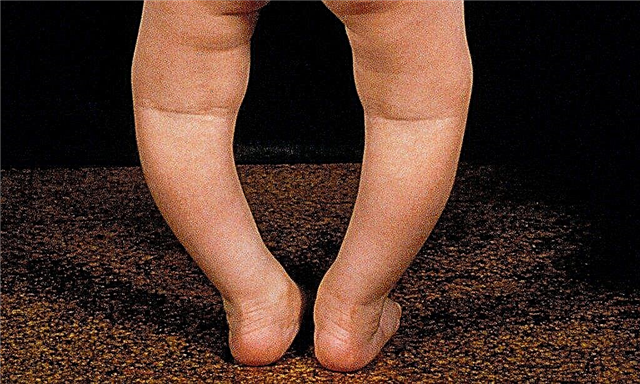In modern society, the problem of vitamin D deficiency in the human body is of particular importance. As a result of numerous studies, it was revealed that almost half of the world's population suffers from its insufficiency. Deficiency of this vitamin at an early age provokes the development of rickets, and in older children and adolescents, a decrease in bone strength.
Rickets is a childhood disease that develops as a result of vitamin D deficiency due to insufficient intake or impaired absorption and metabolism, which leads to malfunctions of phosphorus-calcium metabolism, which causes damage to many organs and systems, but mainly the bone skeleton.
According to scientific literature, rickets in children in the first year of life is detected in 20 - 65% of cases. In developed countries, for example, the USA, Japan, in which active fortification of food is carried out, rickets is much less common than in developing countries. Thanks to the enrichment of many foods with vitamin D, the implementation of doctors' recommendations for raising a child and improving living conditions, the frequency of severe and moderate forms of rickets has significantly decreased. However, the frequency of detection of mild forms is still high. In almost every 3 - 4-month-old baby, an experienced pediatrician detects 2 - 3 not pronounced signs of rickets. Therefore, today special attention is paid to the prevention of rickets.
Considering the well-known fact that vitamin D deficiency is a prerequisite for the development of rickets, the whole essence of its prevention comes down to replenishing the body's lack of vitamin D needs.

Does a person need vitamin D?
Vitamin D promotes the development and maintenance of healthy bone tissue during childhood and beyond throughout life. It regulates and maintains the necessary balance of calcium and phosphorus. In babies, vitamin D deficiency results in rickets, and in older children, adolescents and adults, softening of the bones (osteomalacia). A large number of scientific studies conducted in recent years indicate the role of vitamin D deficiency in the occurrence of diabetes, autoimmune, infectious, cardiovascular and oncological diseases.
It turns out that vitamin D, which is traditionally referred to as fat-soluble, is not at all. Getting into the body or independently forming in it, it acquires an active hormonal form and acts like a real hormone. Therefore, it would be more correct to call it not a vitamin, but a D-hormone. However, keeping up with the historical tradition, it continues to be called vitamin D.
How vitamin D enters the body
Vitamin D enters the body in 2 ways:
- Exogenous - with food or vitamin preparations.
- Endogenous is its independent synthesis in human skin.
This vitamin exists in nature in two forms: D2 (ergocalciferol) and D3 (cholecalciferol), the chemical structure of which is slightly different, and their behavior in the body is almost the same. Most foods contain only small amounts of it. Few of them contain enough vitamin D3 in their composition, including fish oil, hated by children, fish, mainly fatty varieties (mackerel, sardine, tuna), yolk, beef liver. Some vitamin D2 is present in mushrooms, yeast, and some plants.
They also produce foods deliberately fortified with vitamin D, which can be purchased at almost any store. These are infant formula, milk and many dairy products (yoghurt, cheese, butter), bread, cereals and, surprisingly, even beer.
The uniqueness of vitamin D lies in its ability to be synthesized (formed) in human skin under the influence of ordinary sunlight.

Methods for the prevention of rickets
Prevention of rickets in children begins during pregnancy and continues after the birth of the baby, therefore it is customary to subdivide it into: antenatal and postnatal.
Each of them is also divided into: specific and non-specific.
Antenatal prophylaxis of rickets is one that is carried out for pregnant women, and postnatal prophylaxis directly to the child, after his birth.
The fetus has a very high calcium requirement. After 27 weeks of gestation, the fetus absorbs about 290 mg of calcium daily. He receives it from his mother through the placenta. At the same time, the phosphorus-calcium metabolism of a pregnant woman adapts to the needs of the baby, the calcium content in her blood decreases by about 8%. The body of the expectant mother mobilizes all reserves to meet the growing needs of the baby every day, so she needs an additional intake of calcium and vitamin D.
In antenatal prophylaxis, great importance is attached to non-specific methods that should be used in all pregnant women.

Non-specific prevention of rickets includes:
- Creation of conditions for a pregnant woman that allow her to comply with the daily routine she needs.
- Adequate and regular exposure to the air at a time when it is still daylight.
- Motor activity sufficient for a given position.
- A balanced diet, containing calcium and phosphorus in an optimal ratio, rich in vitamins, microelements and the main building component - protein.
- Treatment, and better prevention of gestosis, miscarriage and other diseases.
The best calcium intake is provided by milk and a variety of dairy products or calcium supplements in women who are milk intolerant.
Specific antenatal prophylaxis is carried out in the final two months of pregnancy, if they fall in the fall and winter. It includes the administration of vitamin D to all pregnant women from 28 weeks of gestation daily for 6 to 8 weeks. The exception is pregnant women over 30 years of age. The use of vitamin D is not recommended for them, because there is a danger of the formation of calcifications in the placenta, which lead to fetal hypoxia.
For pregnant women, vitamin D, like any drug, should be taken strictly as directed by a doctor.
Non-specific postnatal prophylaxis consists of:
- correct and complete child care, adherence to the recommended regimen, sufficient walks with the baby in the daytime, summer air baths taken in the shade of trees;
- massage and gymnastics for 30 - 40 minutes a day, each procedure daily.
The only additional source of vitamin D in breastfed babies is breast milk.
But the amount of cholecalciferol contained in it ranges from 15 to 100 IU. This value does not cover the need for it in an intensively growing child's body. In addition, the proportion of vitamin D in mother's milk depends on how well the woman was provided with it during pregnancy. Therefore, breastfeeding, despite all its benefits, can be a risk factor for the development of rickets, especially in winter when there is not enough sunlight.
Specific postnatal prophylaxis of rickets is carried out for all healthy children, starting from the first month of life. Children are prescribed vitamin D in the required dosage. Prophylaxis can be started at 2 to 3 weeks of age if additional risk factors are present.

Risk factors for the development of rickets include:
- From the side of the child:
- prematurity;
- intrauterine growth retardation;
- low body weight;
- malabsorption syndrome (malabsorption in the intestine);
- convulsive syndrome and the use of anticonvulsants;
- diseases of the liver and biliary tract;
- violation of calcium and phosphorus metabolism in close relatives;
- twins.
- From the mother's side:
- age over 30 at the time of conception;
- history of kidney and gastrointestinal tract diseases;
- the interval between pregnancies is less than 3 years.
Should I give vitamin D to my child?
Many parents doubt whether it is worth giving their child vitamin D. He already gets it from food and during regular walks. So that there is no doubt, moms and dads need to know whether natural sources (food and sunlight) are able to fully provide a growing body.
Under the influence of the sun's rays, vitamin D3 is quite actively synthesized in the skin up to 15 IU / cm / h. This amount is quite capable of covering the need for a child's body in vitamin. But it is worth remembering that the process of its formation is influenced by: the geographical location of the country, the time of year and day, the level of pollution and gas pollution of the air, cloudiness. In Russia, given its geographic location, the amount of vitamin D that a person needs is formed in the skin only in summer, on warm, sunny days. Moreover, a child wearing only a diaper must stay in the open sun for at least 30 minutes a week, and a baby with open arms and face - 2 hours. A conscientious mother will not leave her child under the open sun, especially since pediatricians do not recommend walking in direct sunlight for children under six months. Melanin - a pigment that gives color to the skin, is a barrier and prevents the passage of sunlight, so dark-skinned people produce less vitamin D.
Scientists have shown that sunscreens and lotions (SPF 8 and above), acting as a barrier, reduce vitamin D production by 95%.
With foodstuffs, a very insignificant proportion of vitamin D gets into, making up only 20-30% of the required norm, and even a full-fledged diet is not able to provide the need for it.
The artificial man eats about 1 liter of the mixture every day. The mixture is fortified with vitamins, so he gets 400 IU of vitamin D daily. There is little of it in breast milk, so babies suffer from insufficiency. Older children receive about 150 - 250 IU of vitamin D from food daily, and the need for it in an intensively growing body is much greater, especially in adolescents.
It turns out that natural sources cannot provide the child with the necessary amount of vitamin. Therefore, the prevention of rickets in children by prescribing vitamin D preparations is mandatory in Russia.
Parents who care about the health of the child should follow the recommendations of the pediatrician and give the baby the prescribed dosage of vitamin D.
How to determine the level of vitamin D in the body?
Want to know for sure if your baby is vitamin D deficient? Get tested for calcidiol. It is a form of the vitamin that is being tested in many laboratories. The normal serum calcidiol level is between 30 and 100 ng / ml.
Its content in plasma of 21 - 30 ng / ml indicates a lack of vitamin D, less than 20 ng / ml - about its deficiency, and less than 10 ng / ml is a sign of a pronounced deficiency.
What vitamin D preparations are used to prevent rickets?
In our country, the following drugs are used to prevent rickets:
- "D3vit baby", or the well-known fish oil. It comes in capsules that can be used from birth. Each capsule contains 200 IU of the vitamin.
- "Vigantol" is an oil solution (20,000 IU in 1 ml).
- "Aquadetrim" is an aqueous solution containing 15000 IU in 1 ml.
- "Vitamin D3 BON" is an oily solution of two types: for oral administration and intramuscular injections (200,000 IU in 1 ml).
Although the bioavailability of the oil and water solution is almost the same, pediatricians prefer to prescribe Aquadetrim for prophylaxis, because an aqueous solution has a number of advantages.

Advantages of "Akvadetrim":
- It is absorbed 5 times faster, and its concentration in the liver is higher than that of the oil solution. This allows it to be used for the prevention of rickets in children suffering from gastrointestinal diseases, in whom the process of absorption of oil solutions is difficult.
- For its assimilation, less bile is needed and the enzyme systems are not strained. This effect is extremely important for premature babies, given the functional immaturity of their organs and systems.
- The action of "Aquadetrim" lasts up to 3 months (from oil solutions 4 - 6 weeks).
- It has more activity, and the clinical effect occurs a week after its appointment.
- Convenient and safe to use.
- Does not require special storage conditions.
- It has a pleasant taste that kids really like, and fish oil, which contains oil solutions, is not liked by children and is reluctant to accept.
"Akvadetrim" is produced in glass bottles equipped with a pipette. Each bottle contains 10 ml of solution, and one drop of 500 IU.
According to the latest recommendations, all babies under one year old, including premature babies, regardless of the type of feeding, in order to prevent vitamin D, are prescribed 2 drops (1000 IU) per day every day, starting from 1 month of life. It is necessary to give it to a child constantly without interruption in the summer months, preferably up to 3 years.
Is there a vitamin D overdose?
When a person stays in the sun for a long time, the excess of the vitamin formed in the skin is destroyed, so in this case an overdose is impossible.
Poisoning with vitamin D drugs is extremely rare. It has been scientifically proven to be safe in a single dose of 300,000 IU. For example, if a child drinks 2 bottles at a time, nothing bad will happen. Overdose can occur in children suffering from congenital disorders of vitamin D metabolism. Its main symptoms are nausea, vomiting, increased fluid intake (thirst), and impaired renal function.
Despite rare cases of overdose, vitamin D preparations, like other medicines, should be kept in a place where the child cannot get them.
Conclusion
Since natural sources are not able to completely eliminate the lack of vitamin D in the body, taking its preparations is the only reliable and effective way to prevent rickets in modern children. Taking into account the fact that most babies show early signs of rickets (sweating and baldness of the back of the head), pediatricians and parents need to pay increased attention to its prevention. Take vitamin D, walk regularly during the day, do not forget about proper nutrition, so you will not only prevent the development of rickets in babies and improve the condition of the skeletal system in adolescents, but also significantly reduce the risk of developing many chronic diseases, as well as the incidence of viral infections.



